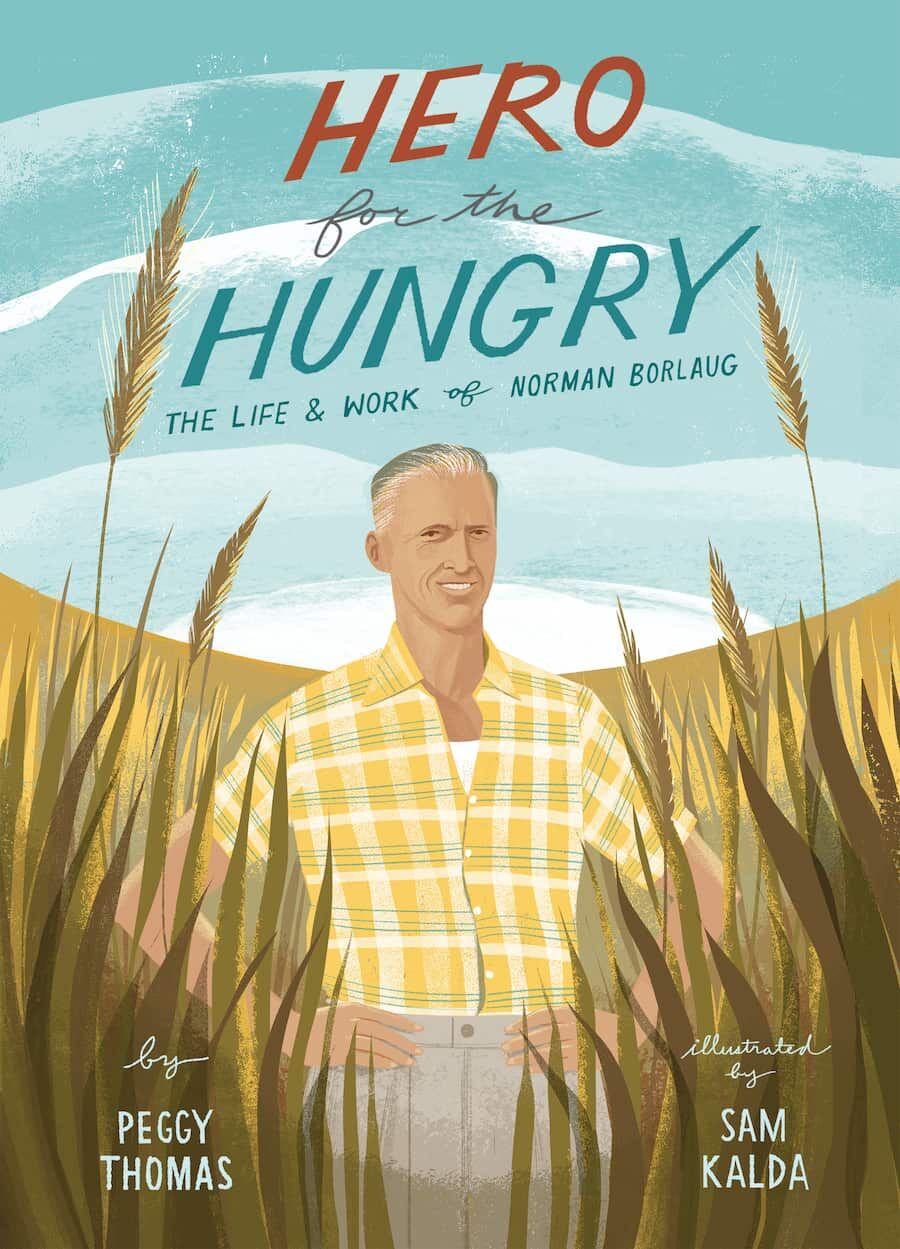One of the heroes of the 20th century’s drive to feed a hungry world can never get enough due.
However, the book “Hero for the Hungry: The Life and Work of Norman Borlaug,” which is written for ages 10 to 15 by Peggy Thomas with exemplary artwork by Sam Kalda, provides a window into the triumphs and the challenge for the man, who is often credited with agriculture’s green revolution.
Borlaug, an Iowa farm boy who grew up during the during the Great Depression, spent many years helping farmers in Mexico and the Middle East try modern ways with new wheat seed that could help them become successful. With the help of fertilizer and the relentless desire to defeat diseases, he indeed succeeded. But it was never easy. Thomas writes about the challenges that Borlaug encountered and the importance of building a team.
Borlaug witnessed starvation in his home community of Cresco, Iowa, as the 1930s was an unfortunate time in America’s history and in the agricultural landscape. As a college student at the University of Minnesota he could see men who had no jobs. They became desperate and were capable of violence when pushed too far. Borlaug understood at an early age about food insecurity and knew mankind needed help and that agricultural science was on the way.
One way Thomas does a good job of pointing out Borlaug’s drive is something any boy or girl in the High Plains can relate to—the need for attention to math and science and how can sports and academic activities help forge an education and develop teamwork. He had a great respect for his teachers and coaches who helped him. Those timeless lessons were never forgotten and helped show why an Iowa farm kid could step on the world stage.
Borlaug became the first (and only) agricultural scientist to receive the Nobel Peace Prize in 1970 and remained humble. Borlaug made a poignant comment to a friend shortly before his death on Sept. 21, 2009: “That I haven’t done enough.”
In these uncertain times it can become a challenge to think about what we can do to feed a hungry world, but Thomas’ writing style does an outstanding job of reminding us that Borlaug and fellow researchers have never given up and have the drive to keep pushing the envelope to feed a hungry planet of inhabitants.
Children from age 10 to 15 and those of us who appreciate and understand the need to feed the world recognize that young minds give us the greatest hope to achieving that goal. Borlaug exemplified why it is important to dream big and never give up, and Thomas captured his story in a way that is a must read.
Dave Bergmeier can be reached at 620-227-1822 or [email protected].



